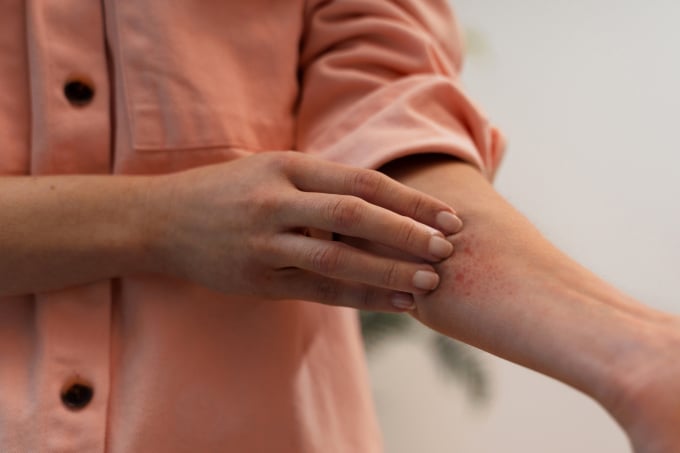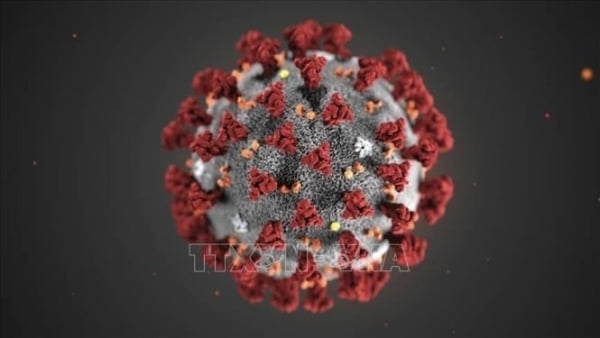Hives, allergies, and contact dermatitis are causes of red rashes on the skin, making the patient uncomfortable.
The most common locations for red rashes are the neck, face, legs, and arms. If severe, they can spread all over the body. The patient feels uncomfortable and affects their appearance. Below are the causes of the disease.
Medal
Hives occur when the body reacts to allergens from foods, shampoos, cosmetics, pollen, animal hair, and house dust. At this time, the body releases a protein called histamine and mediators that cause small blood vessels to dilate and fluid to escape from the blood vessels, causing edema, inflammation, and a red rash. Symptoms of the disease are milky yellow bumps that appear on the skin like mosquito bites, with a red rim, causing itching.
Hives can be prevented by living a healthy lifestyle, wearing loose clothing, avoiding high humidity and previous triggers. Patients should take medication as advised by their doctor.

The most common location for red rashes is on the hands. Photo: Freepik
Allergy
Allergies often recur when the person encounters allergic reaction triggers in the air and living environment. At this time, the immune system releases a chemical called histamine, which causes coughing, dry throat, stuffy nose and tingling or red rash on the skin.
People with allergies can prevent contact dermatitis by avoiding the triggers. During an outbreak, topical steroids and antihistamines can relieve symptoms.
Contact dermatitis
If itching and a red rash appear after using a new cleanser, soap, lotion, or cosmetic, you may have contact dermatitis. It usually clears up within a few days to a few weeks of avoiding the irritant. In the meantime, you can apply cool compresses for 10 to 15 minutes at a time to relieve itching or use moisturizers.
Skin infection
Skin infections caused by bacteria, viruses, fungi, and parasites cause rashes, swelling, pain, pus, and itching. To prevent this, everyone should wash their hands after using the toilet, bathe and wash their clothes after exercising, and avoid wearing clothes that absorb a lot of sweat. Some infections can go away on their own, and over-the-counter skin creams can help relieve symptoms. If the infection is severe, it is best to see a doctor.
In addition to the above causes, skin rashes can also be caused by diseases such as liver dysfunction, worms, and thyroid disorders.
Huyen My (According to Verywell Health, WebMD )
| Readers send dermatological questions here for doctors to answer |
Source link











































Comment (0)